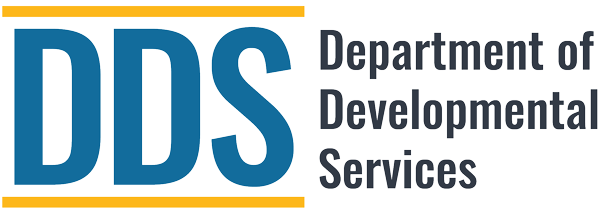Web accessibility encompasses all disabilities that affect access to the Web, including visual, auditory, physical,
speech, cognitive, and neurological disabilities. Abilities can vary from person to person, and over time, for different
people with the same type of disability. People can have combinations of different disabilities, and combinations of
varying levels of severity. Our goal is to make the information on this website accessible to all visitors.
If you have difficulty accessing any material on this website, please contact the website@dds.ca.gov. We will work with you to make the information
available.
Difficulty Accessing Adobe PDF documents
This website contains links to PDF documents that require the current version of Adobe Acrobat Reader. If the Adobe
Acrobat Reader is not installed on your computer, you may download the free Adobe Acrobat Reader.
If you are using a screen reader, you may find it will not read some documents in PDF format. Adobe provides a website
that will convert non-accessible PDF files to a format that is useable with a screen reader. The Adobe Access site is
located at adobe.com/accessibility, and the tool can also be added to your computer as a “plug-in.”
Below you will find a list of some of the technology solutions we have integrated to make our websites easy to navigate,
fast-loading and accessible. To further improve the ease of use and readability of this site, such as increasing the
font size, please review the section below on how to customize your browser.
Accessible Features
Below you will find a list of some of the technology solutions we have integrated to make our website easy to navigate, fast-loading, and accessible.
Photographs/Images:
- Uses Alternative Text “ALT” and/or “TITLE” attributes. ALT/TITLE attributes provide a written description of the image, which is accessible to screen readers, and it is visible when the mouse is placed over the image. This is also useful for people who have images turned off on their browser, in which case a description will display where the image used to be.
WCAG 2.0 Level AA
- The template adheres to WCAG 2.0 AA Guidelines and Success Criteria organized under the following 4 principles:
1. Perceivable:
- Provide text alternatives for non-text content.
- Provide captions and other alternatives for multimedia.
- Create content that can be presented in different ways, including by assistive technologies, without losing meaning.
- Make it easier for users to see and hear content.
2. Operable:
- Make all functionality available from a keyboard.
- Give users enough time to read and use content.
- Do not use content that causes seizures.
- Help users navigate and find content.
3. Understandable:
- Make text readable and understandable.
- Make content appear and operate in predictable ways.
- Help users avoid and correct mistakes.
4. Robust:
- Maximize compatibility with current and future user tools
The following information can further help improve the accessibility experience and find more resources.
Breadcrumbs:
- Located at the top and directly below the main navigation, provides a trail of where you are and where you have been. Breadcrumbs make it easier to navigate your way back to the root folder.
Customize Your Browser to Fit Your Needs
Change Font Size
In most browsers (example: Firefox, Netscape) you could change the font size by
following the steps below:
- Open your browser
- Click View button from top menu bar
- Click Text Size
- Select your option.
If your browser uses a different naming convention and you do not see this path, please check the Help
menu on your browser. The Help menu is usually the last option on the top menu bar and it can often be
accessed by pressing the keys “Alt” + “H.”
In addition, newer browser versions have a magnifying tool that lets you zoom into a page and display
all elements at 150 percent, 200 percent, etc. Look for the magnifying tool with a “+” character. This
icon is typically located at the bottom of your browser, on the right, or at the top, below the standard
menu tools, on the right. Furthermore, the keyboard shortcut to access this tool is:
“Ctrl” + “Shift” + “+” to zoom in, and
“Ctrl” + “Shift” + “–” to zoom out.
Shortcuts
- Keyboard shortcuts: This is a list of the most common keyboard shortcuts in Firefox, and the
equivalents in Opera (from Firefox website.) - Mouse shortcuts: This is a list of the most common mouse shortcuts in Firefox, and the
equivalents in Opera. The shortcuts are for Windows, but most of the
Firefox shortcuts should work in Linux too (from FireFox website.)
Add-Ons
- List of popular Firefox add-ons
- Firefox web developer toolbar: Allows you to turn CSS on and off, disable javascript scripts and images, view
source code, etc.
Keyboard Commands for:
Related Resources:
- California’s Accessibility Standards
- Americans with Disabilities Act Notice
- California Commission on Disability Access (CCDA)
- California Department of Rehabilitation (DoR)
Last modified: June 27, 2025
